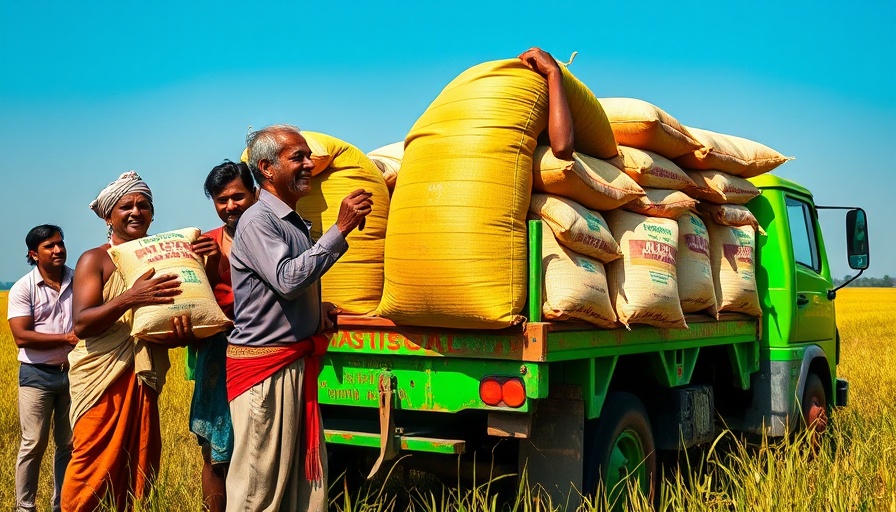
Rethinking India’s Farm Insurance: A Burden for the Vulnerable
India’s struggle with climate change has put its agricultural sector on edge, leaving vulnerable farmers grappling with substantial financial risks. For many, government insurance schemes, designed to offer a safety net, are falling short of their promise. Farmers like Dileep Patidar, who depend on these schemes, often find themselves disillusioned after years of inadequate support.
Climate Change and Agricultural Impact
In 2024 alone, over 4 million hectares of crops suffered due to extreme weather conditions—a significant increase compared to previous years. Such disruption is not merely anecdotal; it represents a systemic issue affecting nearly half of India’s farmers, who rely on agriculture for their livelihoods. According to a report from the Centre for Science and Environment (CSE), the very insurance that aims to protect these farmers can often become a financial drain instead.
The Insurance Scheme: More Premiums, Less Payout
The Indian government’s flagship crop insurance program, despite its ambitions, is failing to cover farmers in climate-vulnerable areas effectively. By charging these farmers higher premiums, the program undermines its ultimate goal: safeguarding incomes. Farmers in high-risk districts pay up to 70% more in premiums but receive significantly lower payouts—about 20% less than farmers in less vulnerable regions. So, while the intention behind the insurance scheme is noble, its execution leaves much to be desired.
Should Farmers Trust the System?
Patidar's story reflects a broader frustration experienced by many farmers who simply want to feel secure in their investments. He was promised protection when he switched crops but received no compensation after losing nearly half his yield. This delay and lack of transparency in payouts foster a scenery of distrust among those who need these systems most.
The Path Forward: A Need for Reform
Experts like Amit Khurana from CSE stress the importance of reforming these insurance schemes so they truly serve the vulnerable. “Farmers need to perceive a benefit in adopting it,” he states, highlighting that lower premiums accompanied by timely payouts could encourage farmers to engage with these systems more positively. The future of farming in India could hinge on making these adjustments, creating a more equitable landscape for its agricultural workers.
The Bigger Picture: The Role of Sustainable Practices
As climate change continues to challenge traditional farming practices, alternative methods may hold the key to resilient agriculture. Sustainability initiatives, focusing on soil health, biodiversity, and water conservation, can help farmers withstand the changing climate. Transitioning towards regenerative agriculture offers promising pathways for the future, which not only sustain farmers’ income but also strengthen community resilience against climate impacts.
Building a Sustainable Agricultural Future
India's farmers are at a crossroads. With over 46% of the population engaged in agriculture, it is vital to promote sustainable practices that reduce the carbon footprint while enhancing productivity. Community gardens and organic farming could be popular strategies urging the movement towards sustainable agriculture. Farmers must embrace innovative practices like composting and eco-friendly products to conserve resources and counteract climate change.
 Add Row
Add Row  Add
Add 



Write A Comment